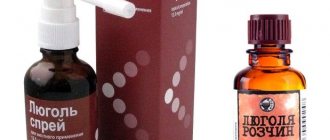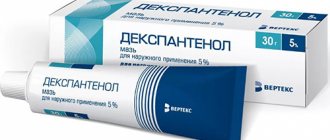home
Our directions
Treatment room
Intramuscular injections
The most common method of administering drugs is intramuscular injection. It is done only in those areas where there is a noticeable layer of muscle and there are no large nerve nodes or endings.
Why choose us?
We will relieve pain and inflammation
All manipulations are absolutely safe
Experienced and experienced staff
Consultation with a doctor is free during treatment with us
- Prevention program as a gift
- Save on treatment up to 30%
- FAQ
How to give an injection to another person
The instructions are quite simple:
- Make sure you have all the necessary items and materials - medicine (solution or powder and distilled water), medical alcohol, a syringe with a sterile disposable needle, disposable gloves, sterile cotton wool, a disposable towel.
- Place all items on a table or in a tray so that everything is within reach.
- Wash your hands with soap and dry with a towel.
- Ask the patient to lie on his stomach and relax. There is no need to give an injection while sitting or, especially, standing - the muscles will be tense, which can cause severe pain.
- Set up lighting.
- Wear disposable gloves and moisten them with alcohol using a napkin or cotton wool.
- If the medicine is available in powder form, prepare a solution. To do this, fill the syringe with distilled water in the required volume, pierce the rubber cap with a needle and inject the water into the bottle, shake several times until completely dissolved.
- Completely bleed the air from the syringe by turning it upside down with the needle and lightly pressing the plunger.
- Visually mark a cross in the center of the buttock.
- Select the upper right corner (“northeast”) and lubricate the surface with a cotton swab and alcohol.
- Take the syringe just like you would a dart or pen.
- With a quick and confident movement (no need to be afraid), inject the syringe 2/3 of the way. In this case, the needle should be positioned clearly perpendicular to the surface of the skin (at a right angle of 90 degrees).
- Gradually press the plunger and smoothly introduce the solution. This should be done as slowly as possible - 1 ml is injected over 7-10 seconds. It is this pace that provides the patient with maximum comfort.
- In one motion, remove the needle and lubricate the injection site with a cotton swab and alcohol.
- Don't forget to cap the needle so that no one gets pricked. Throw away the syringe - you won't need it anymore.
- Wash your hands, dispose of unnecessary materials (medicine bottle, packaging, etc.).
Attention!
If the solution with the medicine is cold, it must be taken out of the refrigerator in advance. If you don’t have time, you need to hold the bottle in your hands to warm it to room temperature.
How to treat bumps on the buttocks
Regardless of the reason for which you have painful lumps after injections, they still need to be treated. “You definitely shouldn’t self-medicate, especially with “fresh” infiltrates, since any infiltrate can both resolve and fester. I’ll immediately explain what a “fresh” infiltrate is. This is a lump that you discovered immediately after the injection or is not older than 14 days. If the infiltrate is 1-2 months or more old, then the probability of its suppuration is quite small, but the probability of its complete resorption also tends to zero,” notes the specialist.
If it doesn’t reach the point of an abscess, then you can get by with fairly simple means - using gels, ointments and compresses. “What specific medication you need, the frequency and duration of its use, is determined by the doctor during an in-person visit after examination and carrying out the necessary examination methods (ultrasound of soft tissues),” says the doctor.
At home, hematomas and infiltrates can be treated with safe means. “Moderate massaging of the injection site, performing squats and applying cold compresses to the site of swelling in the first 1-2 days after its appearance is acceptable,” reminds Bulat Yunusov.
“Bumps after injections can be treated with an iodine mesh, but it is better to see a surgeon so that he can prescribe physical therapy,” the general practitioner recommends.
Physiotherapy is prescribed as an addition to the main treatment, which allows it to be shortened. Among the most effective methods are:
- Electrophoresis
is the penetration of medicinal drugs into the skin and soft tissues under the influence of an electric field. - UHF.
“This is the treatment of infiltration with a continuous or pulsed ultra-high-frequency electric field,” comments a doctor at a Moscow clinic. - Phototherapy.
Irradiation of problem areas with ultraviolet light in a narrow or wide range.
How to give an intramuscular injection yourself
In this situation, the injection is placed in a slightly different place. Moreover, it is more difficult to act, since there is practically no review. It is best to seek help from another person, but in extreme cases, you can give an intramuscular injection to yourself. The procedure is performed like this:
- The preparatory work is exactly the same.
- Before giving the injection, you need to sit on a chair and relax your leg.
- The injection is placed in the upper thigh. To do this, three thirds are marked on the outer side of the thigh and the middle third is visually highlighted.
- The injection is given with a quick, confident movement, as in the previous case.
Advice
If a person is thin, it is easier for him to make a fold of muscles in the thigh area, as if pinching the tubercle with his thumb and forefinger. The fold should be small, and you need to ensure that only fat remains in it, but not muscle.
Lumps after injections on the buttocks: when to sound the alarm
If the injection is done correctly and you are not allergic to the drug, most likely there will be no swelling in the buttocks. “A person may experience slight discomfort after the injection, which goes away within a few minutes - after intense walking or squats,” warns Bulat Yunusov.
However, if you experience any of the following symptoms after the injections, you should contact your doctor:
- persistent severe pain at the injection site;
- prolonged tingling or numbness;
- prolonged bleeding from the injection site;
- signs of an allergic reaction, such as difficulty breathing or swelling of the face;
- skin redness, swelling, local hyperthermia, pain, fever and other symptoms of a systemic inflammatory response;
- if the compaction does not go away for more than 2 months.
Do not delay visiting your doctor as this may have serious health consequences.
How to give a subcutaneous injection correctly
In some cases, injections must be given subcutaneously. Injections are allowed in different areas:
- the upper part of the left or right buttock;
- the back of the shoulder (another person gives the injection);
- thigh (middle third of the outer or anterior surface);
- stomach - any area, with the exception of a circle around the navel with a radius of 5 cm).
The preparation for the procedure and the execution of the injection are exactly the same. The injection is administered with a quick and confident movement, orienting the needle at a right angle to the surface of the skin. Moreover, when choosing a location, it is worth excluding those areas where there are redness, bruises, wounds, painful areas, stretch marks or scars.
As a rule, administering an injection intramuscularly or subcutaneously does not pose any danger to the patient. But sometimes complications may occur in the form of fever, swelling, redness, allergic reactions (itching, rashes) or other side effects. In this case, you should not hesitate - you need to immediately call emergency help.
What injections are prescribed for IVF?
When preparing and conducting in vitro fertilization, the patient is prescribed the following types of hormonal injections:
- HCG injections before IVF . HCG (human chorionic gonadotropin) is a hormone that is produced by the tissues of the placenta and plays a decisive role in the successful course of pregnancy. In addition, it has a pronounced follicle-stimulating effect - that is, it promotes the rapid maturation of follicles containing eggs. Subcutaneous injections of hCG-based drugs can increase the number of mature oocytes produced by the female body during 1 menstrual cycle - accordingly, increasing the chances of successful artificial insemination.
- Injections of progesterone and estradiol . These hormones are necessary to prepare the endometrium (the mucous layer of the uterus) for implantation of the embryo, the successful fixation of the embryo and its further intrauterine development, and the formation of the placenta. Most often, doctors use gels and suppositories containing progesterone and estradiol, but they can also prescribe intramuscular injections of an oil solution of the pure substance.
In addition to these main groups of substances, during IVF injections of other hormones, anticoagulants that prevent vein thrombosis, etc. may be prescribed. The list of drugs depends on which IVF protocol is prescribed to the patient. For example, in the long one, drugs are alternately used to stimulate and inhibit ovulation in order to synchronize processes in the female body and thereby increase the chances of successful conception. In a short and natural IVF protocol, minimal or no hormone injections may be used to avoid causing ovarian hyperstimulation syndrome.
Recommendations for pregnant women
An injection of hCG is recommended for a pregnant woman when her body does not have enough human chorionic gonadotropin for a comfortable pregnancy and the development of a healthy fetus. Before giving instructions on the need for hormonal therapy, the doctor asks for a repeat test for hormone levels and draws conclusions based on several studies.
The hCG norm is a vague concept, so you should not be afraid of minor deviations down or up. But when your test results differ from the standards indicated in the hCG table, you need to carry out hormonal therapy and identify the reasons for the deviation from the norm.
Non-compliance with standards can be caused by various pathologies and anomalies, including:
- Ectopic pregnancy,
- Frozen pregnancy
- Problems in the formation of the placenta,
- Risk of miscarriage.
When resorting to hormonal therapy, do not forget about the possible side effects that the use of drugs can lead to. The use of human chorionic gonadotropin can be fraught with the formation of a follicular cyst and other pathologies. Preparations containing hCG are not recommended for use for the following reasons:
- During lactation,
- With early menopause,
- In case of tumors in the ovaries and pituitary gland,
- With thrombophlebitis,
- In case of obstruction of the fallopian tubes,
- If you have allergies.
If a married couple is faced with the impossibility of conceiving on their own, reproductive specialists find out what the cause of the problem is by analyzing the results of tests and examinations that both partners undergo. If a deficiency of human chorionic gonadotropin is confirmed, an hCG injection is indicated. Correctly calculated effects of hormonal therapy help to successfully carry out artificial insemination, comfortably carry and give birth to a healthy baby.
How to choose a syringe and needle for an injection in the buttock
The main thing you need to know when choosing a syringe for injection is that the volume of the instrument should not exceed the amount of the drug administered:
- for children – 2 ml;
- for adults – 5 ml (very rarely 10 ml).
Injections with a volume of more than 10 ml are not given into muscle tissue. A large amount of medicine is not able to quickly dissolve and spread throughout the body. This condition can lead to purulent abscesses.
To prevent the injection of the drug from being too deep, the most suitable needle length is considered to be 4–6 cm. This will also help not to catch the walls of capillaries and nerve endings,
Procedure and types of anesthesia
The dose of the anesthetic drug is selected depending on the type of upcoming intervention and the condition of the individual patient. If a small carious lesion is to be treated, a specialist can use lidocaine in the form of a 2% spray. It is enough to simply spray the gums with this product or stick a special analgesic strip on the gums, for example, Kalgel or Dentinox.
Also, after a small local anesthesia, the dentist can inject an anesthetic into the already slightly numb gum tissue using a syringe. The injection site should be located as close as possible to the diseased tooth, this will reduce the risk of developing gingivitis or periodontitis due to injury to healthy tissue in the future. In dentistry, it is customary to distinguish several types of effects of local anesthesia.
Anesthesia for a large area of tissue damage (carried out only in a hospital setting and under the supervision of an anesthesiologist), anesthesia for implantation or extraction of teeth (involves injection of the drug into the bone cavity), anesthesia during the treatment of painters (injected into the cheek), conduction anesthesia (aimed at stopping pain in nerve endings when it is necessary to treat several adjacent teeth at once), infiltration anesthesia (for the treatment of caries).
previous post
Is it possible to treat a tooth at home?
next entry
Preparing for intramuscular injection
The results of the procedure depend on a number of simple manipulations:
- Inspect the ampoule with the medicine for its integrity, and also check the expiration date of the drug.
- Collect all the medicine at the bottom of the ampoule. To do this, you will need to lightly shake the ampoule 1-2 times.
- Use a special file (supplied with the preparation) to file the upper part of the glass flask. Usually the incision site is marked with a colored rim.
- Break off the sawn tip of the ampoule. For safety, it is better to place the cone in a napkin so as not to get hurt when opening the glass vial.
- Release the syringe needle from the protective cap and immerse it in the medicinal liquid. Pull the handle of the instrument towards you and draw out the medicine.
When the syringe is filled with liquid, you need to tap it a little with your finger. This will help to collect all the air bubbles and, by gently pressing the piston, bring them out. After this, you can give the injection.
If the main medicinal substance is in powder form, it is diluted in a special solution (indicated in the instructions).
This is done as follows:
- remove the protective metal cap from the bottle;
- using a needle and syringe, inject the required amount of solution into the vial of powder;
- shake thoroughly;
- turn the bottle over, pierce the cap and collect the medicine in the syringe.
When the lid is pierced, the needle becomes dull. To make the injection less painful and to maintain sterility, it is better to replace the needle with a new one before injection.







